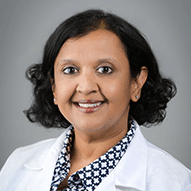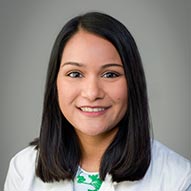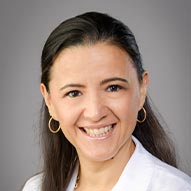Pediatric Dysphagia (Swallowing Disorder)
Pediatric dysphagia (swallowing disorder) occurs when a child has difficulty swallowing food or liquids. This can occur in any phase of the swallowing process.
What is Pediatric Dysphagia (Swallowing Disorder)?
A child with dysphagia may have trouble swallowing food or liquids, including saliva. The child may also experience pain while swallowing. It is difficult for a child with a swallowing disorder to get the correct amount of nutrients into their body, which can affect the child’s ability to grow and gain weight.
It takes about 50 pairs of muscles and 6 cranial nerves working together for human beings to swallow. If anything goes wrong anywhere in the process, it may cause a disorder known as dysphagia.
Swallowing and feeding disorders are common in children. It's estimated between 25% and 45% of normally developing children have some form of the condition.
What are the phases of Pediatric Dysphagia (Swallowing Disorder)?
Swallowing has four phases. The first two phases are voluntary, while phases three and four occur involuntarily in a child’s body. A child has dysphagia when one or more of these phases fail to occur properly:
Oral preparation phase
Oral preparation phase is when food and liquid are prepared in the mouth for swallowing (chewing).
Oral phase
Oral phase is when the tongue starts the swallowing response by pushing the food and liquid to the back of the mouth.
Pharyngeal phase
Pharyngeal phase is when food and liquid are passed through the pharynx (throat) and into the esophagus (swallowing tube).
Esophageal phase
Esophageal phase is when food and liquid goes from the esophagus into the stomach.
What are the signs and symptoms of Pediatric Dysphagia (Swallowing Disorder)?
While symptoms of dysphagia vary by child, in general, the main symptom is a child’s inability to swallow correctly while eating or drinking. Other accompanying symptoms may include the following.
Symptoms in infants (birth to 1 year*) and toddlers (1-3 years old**)
- Arching back
- Coughing
- Choking
- Difficulty breathing while eating
- Excessive crying
- Vomiting (more than spit-up)
- Weight loss/lack of weight gain
Symptoms in children older than 3 years:
- Coughing
- Choking
- Difficulty breathing while eating
- Drooling
- Eating slowly
- Feeling like there is food stuck in throat
- Weight loss/lack of weight gain
- Voice sounds different
*Age of infants as defined by the World Health Organization (WHO)
**Age of toddlers as defined by the Centers for Disease Control (CDC)
What are the causes of Pediatric Dysphagia (Swallowing Disorder)?
There are a variety of illnesses, diseases and congenital (present from birth) defects that can cause dysphagia in a child. A few of the most common include:
- GERD (gastroesophageal reflux disease)
- Cleft lip or cleft palate
- Vocal cord paralysis
How is Pediatric Dysphagia (Swallowing Disorder) treated?
Treatments can range from behavioral therapy and medications to surgery. Your speech-language pathologist (SLP) will work with you and other specialists to determine the treatment plan that is right for your child.
Pediatric Dysphagia (Swallowing Disorder) Doctors and Providers
-
 Bradley Barth, MD Pediatric Gastroenterologist
Bradley Barth, MD Pediatric Gastroenterologist -
 Michele Alkalay, MD Pediatric Gastroenterologist
Michele Alkalay, MD Pediatric Gastroenterologist -
 Amal Aqul, MD Pediatric Hepatologist
Amal Aqul, MD Pediatric Hepatologist -
 Sarah Barlow, MD Pediatric Gastroenterologist
Sarah Barlow, MD Pediatric Gastroenterologist -
 Nandini Channabasappa, MD Pediatric Gastroenterologist
Nandini Channabasappa, MD Pediatric Gastroenterologist -
 Steven Copenhaver, MD Pediatric Pulmonologist
Steven Copenhaver, MD Pediatric Pulmonologist -
 Aakash Goyal, MD Pediatric Gastroenterologist
Aakash Goyal, MD Pediatric Gastroenterologist -
 Bhaskar Gurram, MD Pediatric Gastroenterologist
Bhaskar Gurram, MD Pediatric Gastroenterologist -
 Lauren Lazar, MD Pediatric Gastroenterologist
Lauren Lazar, MD Pediatric Gastroenterologist -
 Megha Mehta, MD Pediatric Gastroenterologist
Megha Mehta, MD Pediatric Gastroenterologist -
 Derek Ngai, MD Pediatric Gastroenterologist
Derek Ngai, MD Pediatric Gastroenterologist -
 Charina Ramirez, MD Pediatric Gastroenterologist
Charina Ramirez, MD Pediatric Gastroenterologist -
 Norberto Rodriguez-Baez, MD Pediatric Hepatologist
Norberto Rodriguez-Baez, MD Pediatric Hepatologist -
 Isabel Rojas Santamaria, MD Pediatric Gastroenterologist
Isabel Rojas Santamaria, MD Pediatric Gastroenterologist -
 Rinarani Sanghavi, MD Pediatric Gastroenterologist
Rinarani Sanghavi, MD Pediatric Gastroenterologist -
 Peter Schochet, MD Pediatric Pulmonologist
Peter Schochet, MD Pediatric Pulmonologist -
 Mhammad Gaith Semrin, MD Pediatric Gastroenterologist
Mhammad Gaith Semrin, MD Pediatric Gastroenterologist -
 Luis Sifuentes-Dominguez, MD Pediatric Gastroenterologist
Luis Sifuentes-Dominguez, MD Pediatric Gastroenterologist -
 David Troendle, MD Pediatric Gastroenterologist
David Troendle, MD Pediatric Gastroenterologist -
 Meghana Sathe, MD Pediatric Gastroenterologist
Meghana Sathe, MD Pediatric Gastroenterologist -
 Romaine Johnson, MD Pediatric Otolaryngologist (ENT)
Romaine Johnson, MD Pediatric Otolaryngologist (ENT) -
 Felicity Lenes-Voit, MD Pediatric Otolaryngologist (ENT)
Felicity Lenes-Voit, MD Pediatric Otolaryngologist (ENT) -
 Pravin Sah, MD Pediatric Pulmonologist
Pravin Sah, MD Pediatric Pulmonologist -
 Stephen Chorney, MD Pediatric Otolaryngologist (ENT)
Stephen Chorney, MD Pediatric Otolaryngologist (ENT) -
 Edaire Cheng, MD Pediatric Gastroenterologist
Edaire Cheng, MD Pediatric Gastroenterologist -
 Kimberly Donner, PA-C Physician Assistant - Otolaryngology
Kimberly Donner, PA-C Physician Assistant - Otolaryngology -
 Jennifer Moylon, PA-C Physician Assistant - Otolaryngology
Jennifer Moylon, PA-C Physician Assistant - Otolaryngology -
 Emily Roman, PA-C Physician Assistant - Otolaryngology
Emily Roman, PA-C Physician Assistant - Otolaryngology -
 Katherine Turner, PA-C Physician Assistant - Otolaryngology
Katherine Turner, PA-C Physician Assistant - Otolaryngology -
 Carol Watson, PA-C Physician Assistant - Otolaryngology
Carol Watson, PA-C Physician Assistant - Otolaryngology -
 Cheryl Holihan, APRN, PNP-AC/PC Nurse Practitioner - Otolaryngology
Cheryl Holihan, APRN, PNP-AC/PC Nurse Practitioner - Otolaryngology -
 Jennie Jones, APRN, PNP-AC/PC Nurse Practitioner - Otolaryngology
Jennie Jones, APRN, PNP-AC/PC Nurse Practitioner - Otolaryngology -
 Phuong Luu, PA-C Physician Assistant - Gastroenterology
Phuong Luu, PA-C Physician Assistant - Gastroenterology -
 Caroline Martin, APRN, PNP-AC/PC Nurse Practitioner - Otolaryngology
Caroline Martin, APRN, PNP-AC/PC Nurse Practitioner - Otolaryngology -
 Margaret McCasland, APRN, PNP-AC/PC Nurse Practitioner - Otolaryngology
Margaret McCasland, APRN, PNP-AC/PC Nurse Practitioner - Otolaryngology -
 Van Nguyen, APRN, PNP-PC Nurse Practitioner - Gastroenterology
Van Nguyen, APRN, PNP-PC Nurse Practitioner - Gastroenterology -
 Jennifer Peacock, APRN, PNP-PC Nurse Practitioner - Gastroenterology
Jennifer Peacock, APRN, PNP-PC Nurse Practitioner - Gastroenterology -
 Shabina Walji-Virani, APRN, PNP-PC Nurse Practitioner - Gastroenterology
Shabina Walji-Virani, APRN, PNP-PC Nurse Practitioner - Gastroenterology -
 Christine Winser-Bean, APRN, FNP Nurse Practitioner - Gastroenterology
Christine Winser-Bean, APRN, FNP Nurse Practitioner - Gastroenterology
Frequently Asked Questions
-
How can I tell if my child has a swallowing or feeding disorder?
Children with dysphagia sometimes reject certain foods or eat smaller amounts than usual. If your child displays any of the following symptoms during feedings over time, get to your doctor right away.
Your pediatrician will ask you about any swallowing or feeding problems and give your child a physical exam. He may recommend a speech-language pathologist (SLP) who may
- Ask you questions about your child's medical history, symptoms and any developmental issues
- Look at the muscles involved in swallowing to determine their strength and movement
- Observe your child's behavior during feeding, including her posture and mouth movements
- If necessary, perform special tests, such as X-rays or endoscopic assessments, to observe the swallowing process from the inside
Depending on the extent of the dysphagia, the SLP may put together a feeding team. Members might include physicians, nutritionists, physical therapists or developmental specialists.
-
How common are swallowing and feeding disorders in children?
Swallowing and feeding disorders are common in children. Estimates are between 25% and 45% of normally developing kids have some form of dysphagia.
-
How is dysphagia in children diagnosed?
Your pediatrician will perform a physical examination on your child. If she suspects dysphagia, she will refer you to a speech-language pathologist (SLP) to run further tests.
-
What if my child doesn’t receive treatment for dysphagia?
Left untreated, dysphagia can cause malnutrition or dehydration, aspiration and pneumonia. These can all lead to more serious medical conditions later on.